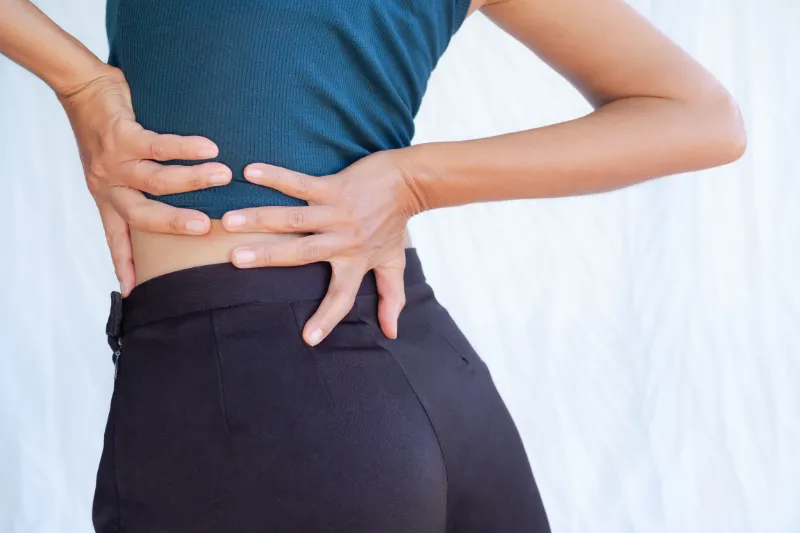Back Pain

Back Pain
Back pain is one of the most common reasons that people seek medical advice, particularly lower back pain. Any type of back pain can stem from tight muscles, desk jobs, poor posture, car accidents, any many more factors!
Symptoms for back pain can range from a muscle aching to a shooting, burning or stabbing sensation. Also, the pain can radiate down into the legs. Bending, twisting, lifting, standing or walking can also emphasise the pain.
Seek medical advice if-
- The pain lasts longer than a few weeks or is unbearable
- Spreads down one or both legs
- Causes weakness, numbness, tingling, or loss of sensation
- Unexpected weight loss
- New bowel or bladder problems
- Saddle anaesthesia (numbness when wiping)
What do we treat?
Muscle or ligament strain- Repeated heavy lifting or a sudden awkward movement can strain back muscles and spinal ligaments (more common in people with a poor physical condition)
Bulging discs- Discs act as cushions between the vertebrae of your spine. The soft material inside a disc can bulge and press on a nerve which can create shooting pains. Disc problems can typically be found on spinal X-Rays, CT scans, and MRI scans.
Osteoporosis- The spine’s vertebrae can develop painful breaks if the bones become porous and brittle.
Ankylosing spondylitis- This inflammatory disease can cause some of the vertebrae in the spine to fuse making the spine less flexible. This can be detected on an X-Ray.
What we do to help?
To help prevent back pain you should exercise regularly, build muscle strength and flexibility, maintain a healthy weight and lifestyle, and quit smoking.
If you are suffering with back pain you should try to stay active and continue with daily activities, you can also use a heat pack to help relieve any stiffness or muscle spasms. Gentle exercises and manual therapy treatments such as massage and spinal mobilisations / manipulations will also help to alleviate the pain.